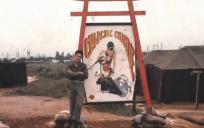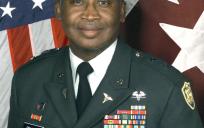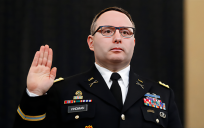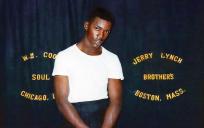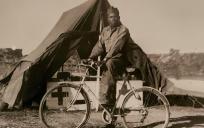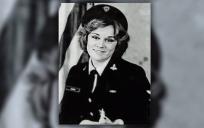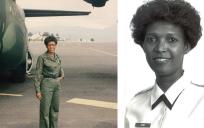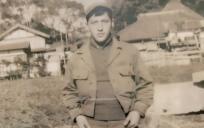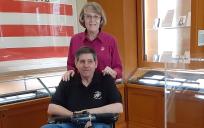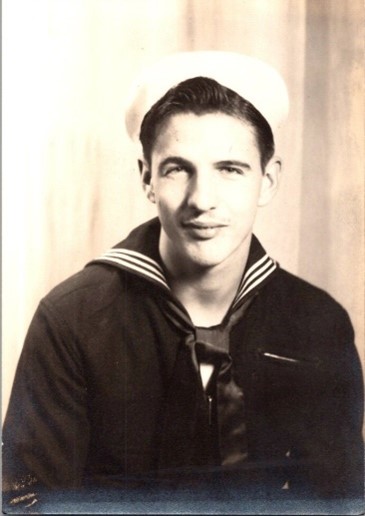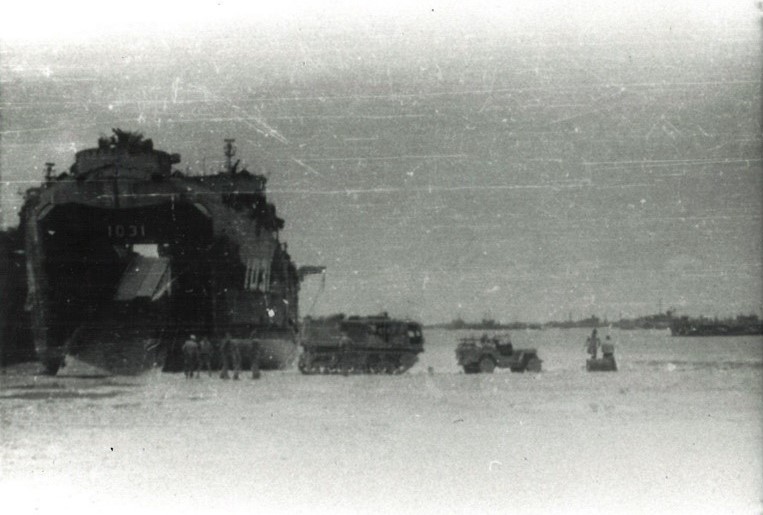Record date:
Paul Davis, Radioman First Class
Recorded a year before his passing, Davis’s oral history offers a unique glimpse of the life of a radioman on a LST [Landing Ship Tank] in the Pacific during decisive months of World War II.
Born in Marquette, Michigan, 1925, Paul enjoyed growing up in this peaceful community. His mother tongue was French though his francophone parents taught him English, at a young age. He liked his studies, making sure to include business skills with academic subjects, and participated in sports and in cribbage teams.
Davis enlisted in the US Navy when he was seventeen years old, following the attack on Pearl Harbor. Although initially rejected due to the puzzling reason of “overbite,” the Navy landed up drafting him one year later. Paul hoped to employ his skills such as typing but he was designated to train as a radioman in Company 1417.
In addition to regular requirements of boot camp at Great Lakes Navy base, Davis and the others began learning the basics of Morse code and how to transmit information over teletype. Because radiomen were not expected to “see action”, arms training was limited to shooting a .45 or a rifle. A leave from Great Lakes to Chicago proved to be formative. He met Rita Koss, the woman who would become his wife and for the next three years they would write to each other regularly. Following basic training, Davis was sent to Radio School at Auburn, Alabama where he further developed his knowledge of Morse Code and also studied signals. He was quartered with eight men who would practice code and signals together. They would also spend their down time in Auburn, sometimes enjoying USO activities. Davis was next assigned to the LST-1031 which was still being built in Boston and he took part in the shakedown cruise along the East Coast to Norfolk. Additionally, Davis and the other two radiomen assigned to this ship, learnt how to fire the ship’s guns in times of combat, as back up.
Traveling to Pearl Harbor through the Panama Canal from the Atlantic to the Pacific was very exciting for the youngster who previous to his service had never been outside of the Upper Peninsula. After about a month in Hawaii, LST-1031 loaded up with tanks, jeeps, tanks, and ammunition as well as with troops of Marines, headed out. The captain revealed three days later that the destination was Okinawa, in the Ryukyu Islands. This was part of Operation Iceberg led by then Commander Halsey. The mission of LST-1031 was to load and unload vehicles and troops on numerous beaches on islands since this type of ship could land directly on shores without piers. Their landing on Okinawa took place while the battle was raging in either May or June 22, 1945.
The LST was nicknamed Long Slow Target by the sailors due to its slow speed of 6 knots. Davis compares it to a caboose, lagging beyond the rest in the convoy. The LST was also a “sitting duck” during the times when it was docked for loading and unloading. Nonetheless, the LST’s ability to move side-to-side, so that it could avoid becoming a target of bombings or kamikaze planes was a plus!
The LST also has a flat bottom versus a keel like most ships, and lies low in the water, so that torpedoes would generally go under the boat rather than hit it. These features were helpful especially when there were 131 suicide plane attacks in three days during the amphibious operations near Okinawa. The Japanese would conduct “checkboard bombing” where they would fly low and shoot as many boats as possible. Unfortunately, one time the ship next to them got hit and deckhands from LST-1031 had the grim task of retrieving bodies and piecing them together.
Radioman First Class Davis was obliged to spend most of his time in the radio shack of the LST except for his deck-hand duties. They received coded messages on Morse Code and transmitted messages to the aircraft carrier where the admiral was located. Working on radio required much alertness since the radios were open until instructions were received, while at the same time destroyers would be firing over their heads to the land nearby. At Iwo Jima, Davis and the other two radiomen were allowed to get out of the radio shack briefly to see the raising of the US flag. It was especially moving for him to see photos or films of this historic moment later on. Because the information transmitted was coded, Davis did not have an “in” regarding the news though he did learn from a transmission that journalist Ernie Pyle had died. Aside from the ubiquitous broadcasts of propagandist, Tokyo Rose, real information was hard come by. LST-1031 persevered and Davis remembers the joy of the sailors when they got news of VJ Day on Sept. 2, 1945. Not having been notified of Paul’s whereabouts, his parents were thrilled when he returned home. Paul married Rita Oct. 5, 1946, and the two had five children.
Davis worked in a variety of positions in civilian life. In spite of having served in a combat zone, Paul maintained a bright disposition, participated in LST Association reunions, and kept up a close friendship with one of his mates, Eddie Rivera, and his wife. Although there was no chaplain on LST-1031 nor formal religious services, Paul carried with him a little prayer book, as well as the "Prayer for those in Active Service." He recalls how he and the men prayed fervently.
Davis strongly encourages the young not to take their health for granted and he hopes that prayer and the concept of life after death will help guide them.
Photos courtesy of Anne Bartes, and Keenager News, a publication of Catholic Charities of the Archdiocese of Chicago.
